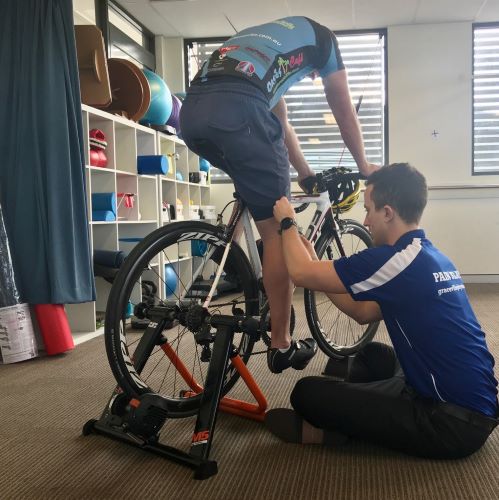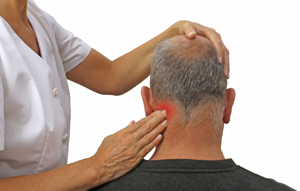November Newsletter

CYCLING AND KNEE PAIN
Cycling is great exercise and a wonderful way to explore your local area and bike trails. But too much enthusiasm and not enough preparation can lead to a soft tissue overuse injury caused by the repetitive nature of cycling.
Australian Physiotherapy Association Musculoskeletal Physiotherapist Dr Paul Visentini says a survey of 518 recreational cyclists found 85% experienced one or more overuse injuries over a year, with 41% experiencing knee pain.
“Research in many sports shows that most injuries of this type are as a result of excess training, racing or returning to sport too quickly,” he says.
“This is very much the case in cycling. After a quiet winter or a lockdown, a return to riding which is too rapid may overload the tissues and cause subsequent overuse injury.”
Dr Visentini says spikes in activity or sudden activity can cause injury. He says pain in the front of the knee is related to weak glutes and quadriceps and these muscles need to be strengthened to protect the knee. This can be done by slowly increasing the amount of cycling and exercise undertaken.
“A well-rounded approach to preventing knee pain is to optimise your body for cycling and check with your physiotherapist for a ‘bike fit’ appointment,” he says. “Another key point is that regular cyclists usually have a good bike set-up, which reduces their risk of an overuse injury.”
Dr Visentini says whether a person cycles a lot or a little, their body will always have a tipping point for overload. He recommends seeking advice from a physiotherapist if any soreness or pain doesn’t clear within two days.
2020 Australian Physiotherapy Association / RACV
✅ Make sure your bike is fitted appropriately to your body. If you have pain or aching in your knee, then you may need to adjust your seat, frame or pedals. It’s best to get advice from a physiotherapist.
✅ Slowly increase the amount of cycling and exercise you do. For example, start with easy pedalling, without intensity or hills, over a short distance and every second day. A general rule is to increase the distance or load by 10-20 per cent each week. You might start at 30 minutes per ride and increase by 10 minutes per week per ride. Once you progress to one hour of easy riding on flat ground then you can tackle a harder or longer ride on the weekends.
✅ Do a strength and conditioning program at the same time as returning to cycling. Generalised stretching as well as the use of a spiky ball in the glutes and a foam roller around the quadriceps can help to control soreness and recovery.

Why posture matters
Good posture not only makes you look strong and healthy, it’s also a critical factor in preventing pain and injuries. Sustaining a good posture should be an important factor in terms of looking after your overall health.
As we get older, bad habits such as slouching and inactivity cause muscle fatigue and tension that can ultimately lead to poor posture. The complications of poor posture include back pain, spinal dysfunction, joint degeneration, rounded shoulders and a potbelly.
If you are worried about your posture talk to your physio. They can assess your current posture, provide treatment and advice as well as prescribe specific postural exercises to help improve your posture.
GIVE THIS QUICK POSTURE EXERCISE A GO!
- Start in a standing position against a wall with your feet about 6 inches from the wall.
- Make sure that your shoulder blades and bottom are in contact with the wall. There should be a gap between your lower back and the wall, to keep its natural arch.
- Now try to place the back of your head against the wall by tilting your chin downwars slightly. Flatten your shoulder blades against the wall and hold your arms by your side touching the wall with the back of your hands.
- Lift your arms out to the side and upwards, maintaining contact with the wall as much as possible. Return to the start position and repeat.
Our aim is to get you back doing the things you want and need to do, pain free! If you are experiencing neck pain call today for neck pain treatment in Graceville.
Short on time?
We offer early and late appointments Monday to Friday and are open on Saturdays from 9am till 2pm. Can’t find an appointment online? … We can help! Call us on 32781186 and we will find an appointment time to suit you!
NECK PAIN
In modern life there are many causes for neck pain. This can include poor posture, too long in one position or on a device, trauma or accidents (e.g. car or sporting accidents), awkward sleeping positions, weakness in the muscles that support the neck, overuse of the neck muscles, and in some cases there is no clear reason at all (e.g. acute wry neck)!
Neck pain can be felt in the neck alone, or refer into the head causing headaches, or into the upper back or down the arm(s). Physiotherapists are experts in assessing what is contributing to your neck pain. We will look at your posture and movement, check the joints and muscles, and see if the nerves of the neck are involved.
Once we have found what is contributing to your symptoms we will help you put in place a treatment plan to get rid of your symptoms. This might involve joint mobilisation, massage or dry needling of the muscles, modification of your posture or the way you do certain activities, exercises to help the nerves move freely, or strengthening and stretching exercises for the muscles.

